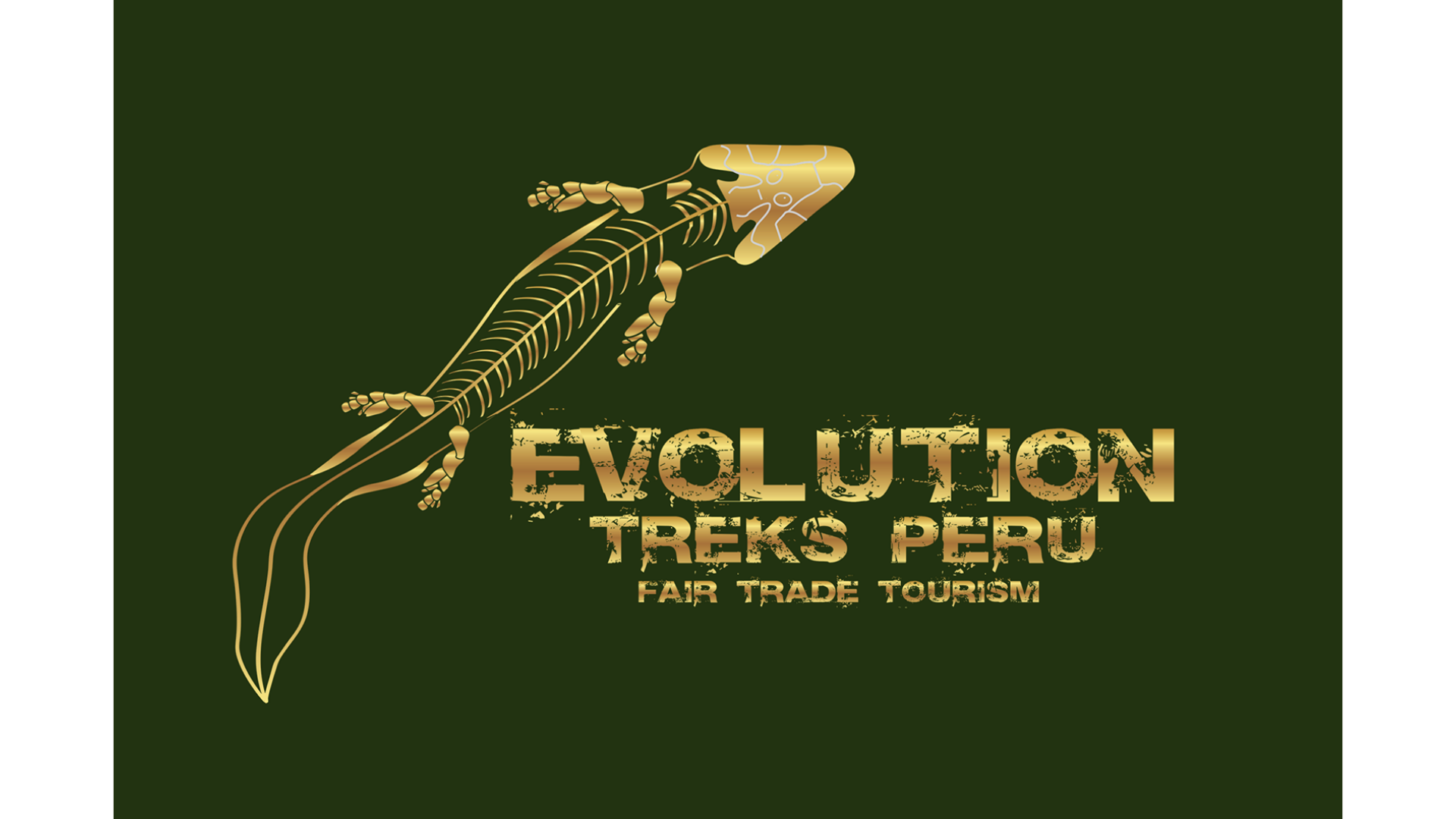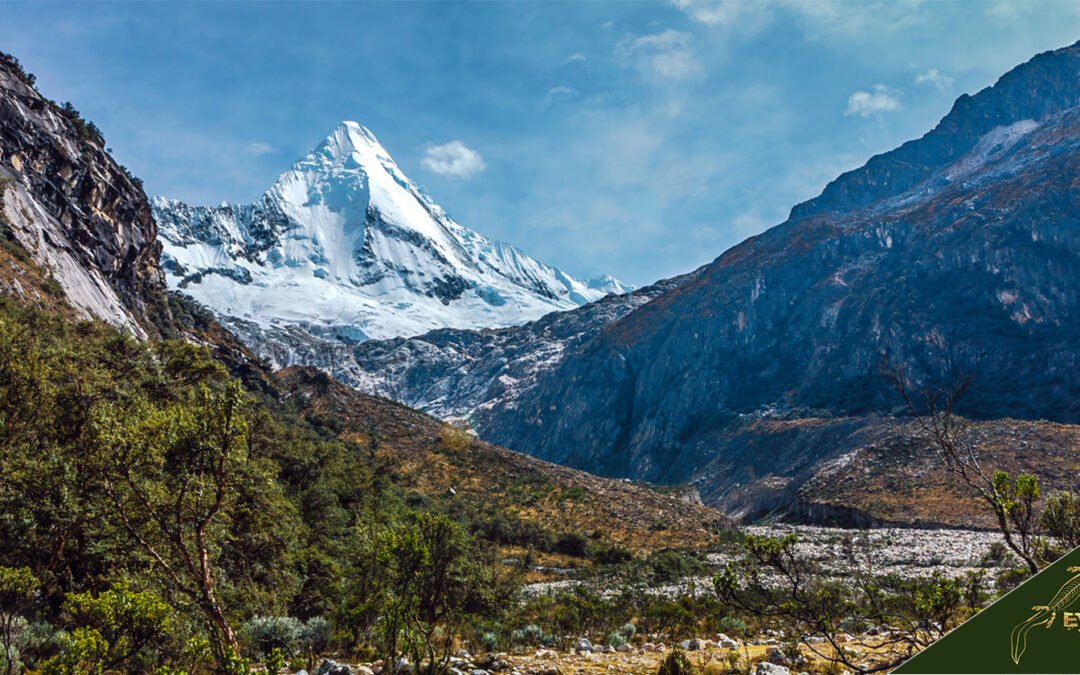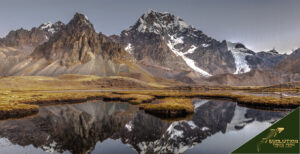Alpamayo, the Jewel of the Peruvian Andes. In Quechuan, Alpamayo means “muddy water”. Alpamayo is one of the most conspicuous peaks in the Cordillera Blanca of the Peruvian Andes. The Inca Empire was a large empire that blossomed in the Andean region of South America, dating back to the early 15th century A.D. They were among the first civilizations in the Andes region. They have many contributions to the history of Peru, like woven textile, which is up to now is still prominent in the country.
The Alpamayo, is a steep mountain, renowned for having a top cone with a highly impressive pyramidal structure. However, the ascent is only available for skilled mountaineers with appropriate climbing equipment due to its remote location. Despite its unique shape, Alpamayo did not appear on the first map of the Cordillera, in 1932. The first try to climb the peak was in 1951. A French-Belgian expedition, headed by the pioneering woman climber, Claude Kogan, climbed up along the north ridge.
It was later found out that the expedition had only made it to a minor summit and not the real summit. Six years later came the first ascent to the real summit. A team of German mountaineers reached the top of the mountain through the same north ridge on June 20, 1957. There are two famous books about the Alpamayo, which are the Blanca in the High Andes by Nicole Kogan, Georges; Leninger, and Alpamayo to Everest: It’s Not About the Summit by Ian Hibbert.
An interesting fact about Alpamayo is that it is unclear whether someone has skied Alpamayo from the summit. However, Benoit Chamoux, Andre Genand, and EWric Favret skied the northwest part of Alpamayo from approximately 200 feet below the summit. A photo of Alpamayo photographed by Leigh Ortenburger was chosen by German Magazine “Alpinismus” as “The Most Beautiful Mountain In The World”, in July 1966.
The Huascaran National Park encompasses the entire range of the mountain. Mount Alpamayo has plenty of different tours to cater to each tourist who wishes to climb the mountain. Tourism is the fastest growing industry in Peru. It is growing faster than any country in South America. The landscape of Peru is lovely and diverse, and ecotourism is prominent. It is home to mountains, beaches, and rainforests.
Due to Peru’s geographical diversity, it is possible to go trekking, alpinism, surfing, mountain climbing, and a lot more activities. Peru’s tourism grows 25% over the past five years. There are no existing buildings in Alpamayo, as it consists mostly of mountain ranges. On the way to Alpamayo hikers can experience the rich flora and fauna of the high Andes, glaciers, lakes, and scenic towns.
Alpamayo is one important tourist site in the Huascaran National Park, and in all entire Peru. Nowadays, Alpamayo is one popular tourist destination, it is not the difficulty that encourages and inspires climbers, but the splendid setting among the endless snows capes of the Cordillera Blanca. Climbers who experienced Alpamayo’s majestic snow-covered heights will remember them forever.
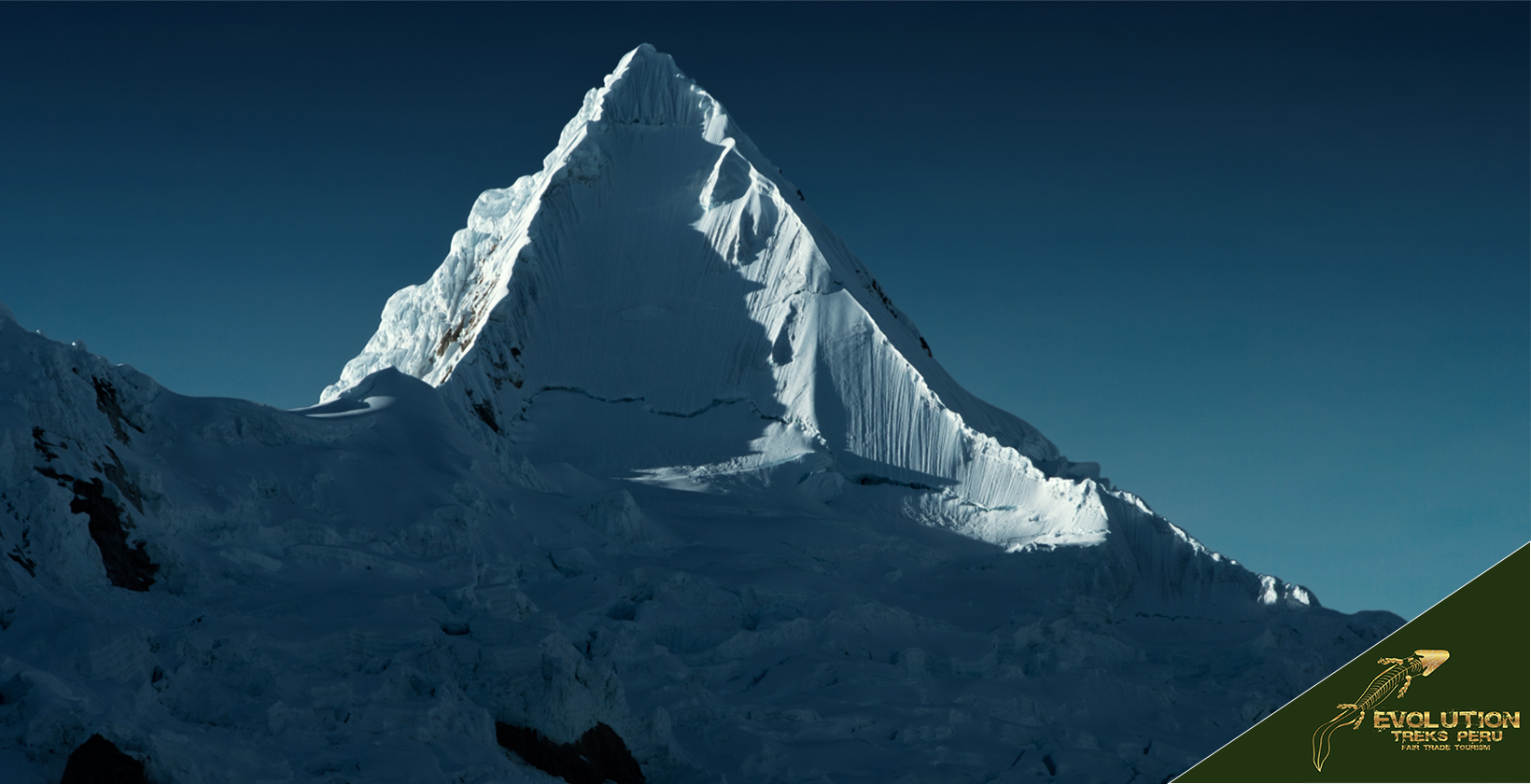
What is the Alpamayo History?
Known as the jewel of the Cordillera, Alpamayo is long considered one of the world’s most beautiful mountains. It is a steep and almost perfect pyramid of ice. Despite its unique shape, Alpamayo did not appear on the first map of the Cordillera, in 1932. The first try to climb the peak was in 1951. A French-Belgian expedition, headed by the pioneering woman climber, Claude Kogan, climbed up along the north ridge. It was later found out that the expedition had only made it to a minor summit and not the real summit. Six years later came the first ascent to the real summit.
A team of German mountaineers reached the top of the mountain through the same north ridge on June 20, 1957. There are two famous books about the Alpamayo, which are the Blanca in the High Andes by Nicole Kogan, Georges; Leninger, and Alpamayo to Everest: It’s Not About the Summit by Ian Hibbert.
An interesting fact about Alpamayo is that it is unclear whether someone has skied Alpamayo from the summit. However, Benoit Chamoux, Andre Genand, and EWric Favret skied the northwest part of Alapamayo from approximately 200 feet below the summit. A photo of Alpamayo photographed by Leigh Ortenburger was chosen by German Magazine “Alpinismus” as “The Most Beautiful Mountain In The World”, in July 1966.
The Ferrari route, the most common hiking route at Alpamayo, was first climbed by a group of Italian alpinists in 1975. Alpamayo is significant in the history of Latin America, because most of the “Inca Culture” within the Cordillera Blanca survived the mountainous conditions among peaks up to 18,000 feet tall and higher.
Alpamayo is the 23rd highest peak in the Cordillera Blanca in the Andes of Peru. Alpamayo, and the rest of the Andes, are fold mountains. Fold mountains are the most common type of mountains in the world. They are formed by the result of the folding of layers within the upper part of the Earth’s crust.
What does Alpamayo Mean?
The snowy mountain derived its present name from the hamlet of Alpamayo (Quechua allpamayu. Allpa means “earth”, and mayu means “river”. Its local name in Quechua ancashino is Shuyty rahu. Shuytu means “thin and lake”, and oblong up, while rahu means “snow”. . In Quechuan, Alpamayo means “muddy water”.
Which Civilization used Alpamayo for what?
The Andean civilizations were composite societies of many cultures and peoples, predominantly originating in the river valleys of the seaside deserts of Peru. They extend from the Andes of Southern Colombia, southward down the Andes to Chile, and northwest Argentina. Andean civilizations first emerge on the small coastal plain of the Pacific Ocean, according to some archaeologists.
The Andean culture was also remarkable for its massive architecture, textile weaving, and several distinctive attributes of the societies they made. Less than a century before the coming of the Spanish conquerors, the Incas, from their motherland, concentrated on the city of Cusco. It united most of the Andean cultures into a single empire that bound all of what is commonly called the Andean civilization.
The Inca Empire functioned largely with no money or markets. What they do is the exchange of goods and services between individuals, and among individuals. Notable features of the Incan Empire are its architecture, distinctly stonework, finely-made textiles, agricultural advances, extensive road networks, and the management and organization of its people and their work.
What are the theories about the origin of the Alpamayo?
Listed below are the theories about the origin of the Alpamayo.
- Altitude history of the Andes. A paper published in the Earth and Planetary Science Letters, explains that the Altipano plateau in the central Andes, and most likely the whole mountain ranges, was formed through a series of rapid growth spurts.
- Oceanic-Cintinental Collision. The Andes Mountain Ranges span the whole length of South America. The leading edge of the Nazca Plate is subducting below the South American Plate at a plate boundary known as a subduction zone. During this subduction, some Nazca crust is scraped off along the base of the Andes, adding height to the entire range. As the sea floor spreads on either side of the ridge, the Nazca plate moves easterly, while the Pacific Plate moves westerly.
What are the myths about Alpamayo?
Listed below are the myths about Alpamayo.
- Pishtaco. It is a mythological boogeyman figure in the Andes region of South America, particularly in Peru. According to myths, a Pishtaco is an evil monster who seeks out Indians to kill them and abuse them in several ways. Some legends say that Pishtaco lives in the mountains of the Andes region.
- Apu (God). The term “Apu” date back to the Inca Empire. An Apu, according to the ancient religion and mythology of Peru, is the term used to describe the spirits of mountains and sometimes solitary rocks, usually displaying humanlike features, that protect the locals.
- Quechua Snow Star. In the Inca mythology. In the Alpamaya and its nearby lakes, among which Sibinacocha stands out, the male energy that fertilizes the mother earth pachamana is born. After a long run, the waters disappeared into the unknown lands, of the Amazon to return. To fill the lakes and glaciers, every night it turned into rivers of stars or wilkimayu, known in the west as the Milky Way. The village of chika, is made up mostly of shepherds of llamas, and alpacas. Alpacas are known to be the guardians and keepers of these natural places. On the north side of the ausantage, the feast of Qoyllur Riti (quechua snow star) is celebrated every year. The celebration starts before the feast of Corpus Christi, where several quechuas pilgrimage to the Lord of Quyllur in the Temple of Sinakara.
Is Alpamayo Important for Peru History?
Yes, Alpamayo played an important role in the history of Peru. The Inca civilization developed in the northern Andes during the 1400s. They formed civilization through meticulous governmental organization and management. They constructed roads, that are still present up to this day. Alpamayo is quite smaller compared to its neighboring peak, and it actually has two sharper summits. These are the North and South summits, separated by a narrow cornice ridge.
Where is Alpamayo Located?
The Andes Mountains of the Cordillera Blanca, the great ice mountain, are settled in the western region of the Peruvian Republic. The easiest way to find the Alpamayo mountain is in the Huascarán National Park. It has plenty of neighboring mountains, but the closest are Cerro Santa Cruz, Artesonjaru, and Carás. However, there were no forests and rivers near the ice mountain.
What are the coordinates of Alpamayo?
The geographical map coordinates of Alpamayo are 8.8792° in latitude and S, 77.6522° W in longitude with an elevation of 5,947 meters (19,511) above the level of the sea.
How is the Map of Alpamayo Layout?

How is the Geography of Alpamayo?
Alpamayo is one of the most conspicuous peaks in the Cordillera Blanca of the Peruvian Andes. The Alpamayo Creek originated northwest of it. The Alpamayo lies next to the slightly higher Quitaraju. The Alpamayo has an elevation of 19,511 ft. and its prominence is 1,467 ft.
Peru consists of moderately well-drained soils. It formed in loamy lodgment till on hills and mountains in glaciated uplands. Climbers must go trekking before reaching a base camp. When taking the Alpamayo circuit, climbers will pass through small forest of quenal tree, deep ravines, elevated streams, glaciers and lagoons. A great diversity of flora and fauna typical of the andean zone.
What is the Geological Profile of Alpamayo?
The geological profile of Alpamayo is an ice-clad mountain and is part of the Cordillera Blanca mountain range in the Peruvian Andes. Alpamayo is smaller than its neighboring peaks. It’s a steep mountain with a pyramidal structure and a gorgeous top cone. It is remotely located, and the ascent should be attempted by skilled mountaineers with proper climbing gear.
Mount Alipamayo is often described as the world’s most beautiful peak. The Andes already formed a mountain range approximately eight million years ago. The geology of the area of Alpamayo, which is known as Cordillera Blanca, consists of three different units: the continental plate, some Jurassic phyllites, and Cretaceous sediments.
What are the Hiking Routes near in Alpamayo?
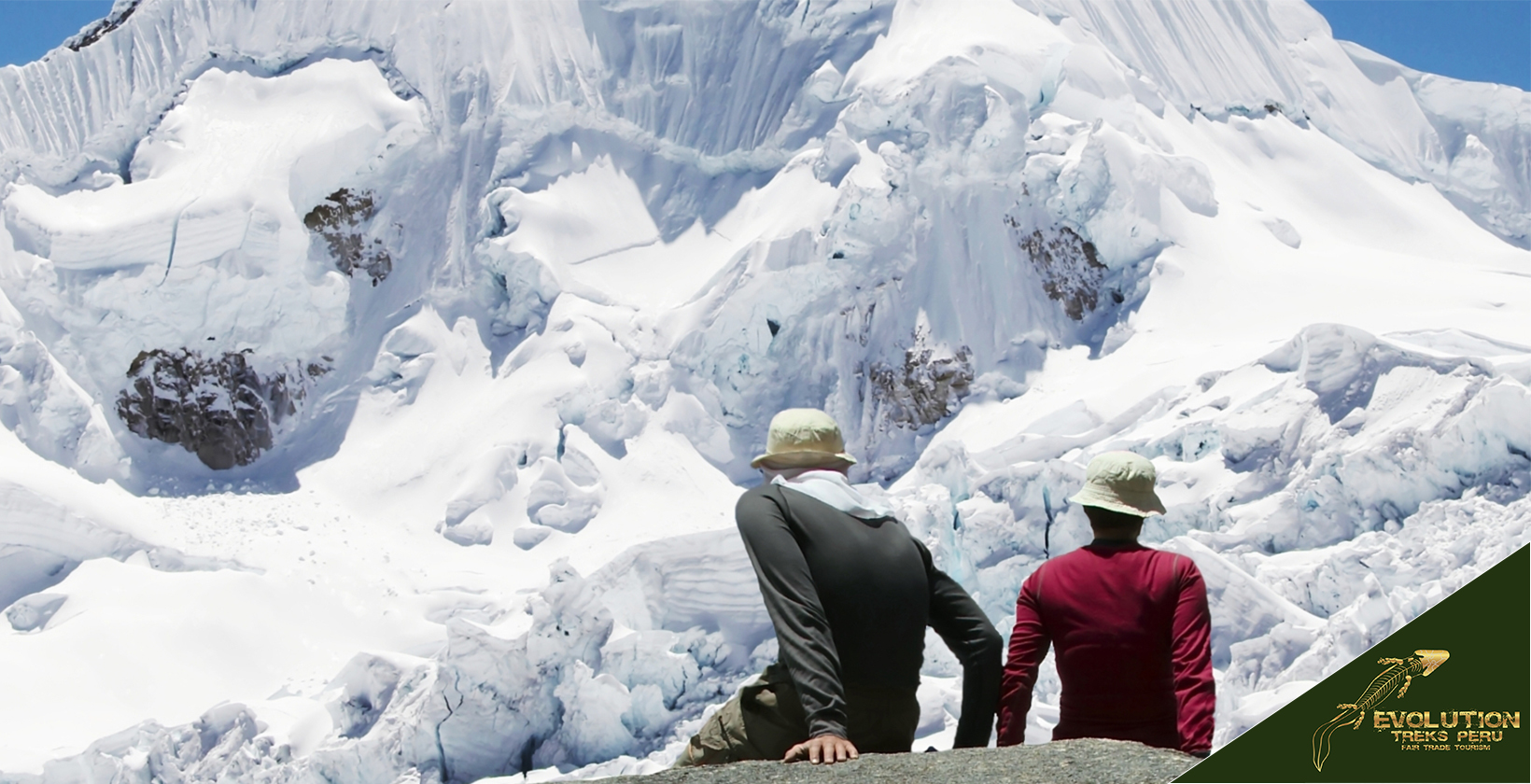
What are the right clothing and gear to climb the Alpamayo?
Listed below are the right clothing and gear to climb the Alpamayo.
- Insulated single leather or synthetic mountaineering boots. Mountaineering boots are used for ice climbing, as climbers need a degree of flexibility for activities like hiking.
- Hiking boots or shoes. For summits of about 6000 meters, a B3 boot is required. It provides additional warmth.
- Pair of knee-high gaiters. It is recommended to bring a pair of knee-high gaiters for bigger routes like the 6000 meters mount.
- Hiking socks and liner socks.
- Mountaineering helmet and goggles. Helmets are always a requirement for every climbing peak for safety.
- Neck gaiter and balaclava. A neck gaiter is a tube of fabric intended to protect the neck and face from harsh weather conditions. A balaclava is a type of winter headgear that protects the head and face while leaving the eyes, nose, and mouth area, exposed.
- Knit cap. Knit caps or knitted hats are the most commonly used hats in winter. They are usually soft, easy to carry, and they have ideal warmth retention.
- Category 4 sunglasses. These specially designed sunglasses have dark lenses suitable for extreme sun conditions. It is used where high glare or intense sunlight is experienced. These sunglasses are suitable for hiking, mountain climbing, and desert trekking.
- Base layer, bottom and top. A base layer is designed to help moisture away from the body. It is the kind of clothing that sits closest to the skin.
- Softshell and hardshell pants. Softshell pants are made of tightly woven synthetic fabric that is water-resistant and windproof. They usually have a brushed lining on the inside for added warmth.
- Lightweight insulated jacket. Insulated jackets minimize the amount of heat the body loses to the atmosphere in cold conditions. They are usually waterproof and lightweight.
- Liner gloves and mountaineering gloves. These kinds of gloves keep the hands warm and dry and should not disrupt the use of hands like gripping a rock or holding an ice-axe.
- Ice axe. An ice axe is an essential climbing safety tool on both ascent and descent routes that involve snow and frozen conditions.
- Crampons. Steel crampons are used for general mountaineering. Stainless-steel crampons provide corrosion resistance, while aluminum crampons are ideal for ski mountaineering. The durability of crampons is what makes them essential for steep, icy, and technical terrain.
- Carabiners. Climbers use carabiners to clip to a rope, attach safety gear, and clip to a climbing harness. A carabiner is a metal loop that closes with a gate.
- Belay device. A belay device is like a brake on a climbing rope. It applies friction to it and keeps the tension on the rope.
- Climbing harness. A climbing harness is important equipment that provides ultimate access and safety. It is used mostly in ice and rock climbing.
- Rope. A rope is used by climbers to help prevent potentially fatal fall-related accidents. Ropes are usually lifesavers.
- Avalanche rescue gear. Avalanche rescue gear or a beacon basically sends out a signal to others who also wear one, in case a climber was buried due to an avalanche.
- Crevasee rescue gear. The gear includes 20 feet of 5-7 mm accessory cord for making prusik slings. Two pulleys for the hauling system, 4 locking and 5 non-locking carabiners for several uses. These uses include prusiking, building an anchor, tethering to an anchor, and setting up a hauling system.
- Headlamp and extra batteries. Headlamps are an essential mountaineering tool during the night. It keeps the hands free is one advantage of them. It is also recommended to pack extra batteries, particularly lithium. They withstand cold temperature compared to alkaline.
- Thermal sleeping bag. A thermal sleeping bag is used to protect its user from temperatures below -40 °C. It helps the body stay warm and prevents the radiant body temperature from escaping into the surrounding air.
How many miles is the Alpamayo?
Alpamayo has 70 miles because of its difficult routes, hikers would climb an average of 45 hours to finish and complete the hike. Additionally, the loop around the mountain has 50 miles with a difficulty level of intermediate to hard.
When is the best time to visit Alpamayo?
The best time to visit and take on the adventure of the Alpamayo is from June to September. During these months, Alpamayo weather is usually stable, which is the safer time to climb. Tourists are drawn to plenty of tourists from all over the world. The climb itself presents a technical climbing challenge to the mountain’s vertical pyramid structures, which adds to the more aesthetically pleasing to see. Alpamayo is located in the NE part of the Cordillera Blanca and clouds come up from the Amazonas Basin more frequently.
How is the climate of Alpamayo?
The climate of Alpamayo is frequently cold because of the surrounding snow in the mountains. Its temperature during the morning often drops to a maximum of -4 degrees Celsius and a minimum of -8 degrees Celsius at night.
Where to stay in Alpamayo?
There are plenty of hotels to choose from in Alpamayo. Alpamayo has different types of hotels with affordable accommodations for tourists. There are numerous choices when it comes to finding the Best Hotel near Alpamayo. Hotel Alpamayo Comfortable is a hotel near the main square of the city.
They have clean and spacious rooms. The hotel staff is friendly and hospitable. Their room has a minibar that says otherwise with 24/7 free Wi-Fi and a front desk. Breakfast is also served for free for guests. The goal of the Hotel Alpamayo is to provide a mix of value, comfort, and convenience at a reasonable price. Aside from hotels, tourists can also rent a room from Alpamayo Guest House II B&B.
The accommodations per night is more affordable, and it costs $22. However, guests will need to book the room for a minimum of 2 nights. It has plenty of amenities and services that are also convenient for guests who want to tour or hike around the area.
What are the Tours for Alpamayo?
Tourists can find a lot of tours offering the exploration of the Alpamayo mountain. The Alpamayo Travel Peru, Peruvian Andes Adventures, Grupo Alpamayo Tours, and others. These tours are already included with tour guides to safely guide and watch over the tourists.
Additionally, these tours are better than others for having skillful guidance during the journey and taking their clients to beautiful and memorable places. Unfortunately, Alpamayo does not have any family tours, as they require professional training to be allowed to climb the snowy mountain.
Also, tour guides are necessary when climbing the Alpamayo mountain to prevent being lost during the adventure. Its high altitude is definitely serious and can scare a person, and tourists wouldn’t know what will happen to them during the trip without those tour guides.

What are the Closest Destinations to Alpamayo?
Aside from Alpamayo mountains, there are other destinations a tourist should give time to visit. There are several Attractions near Alpamayo that don’t usually involve mountain climbing. Nearby cities are also There are a lot of cities near the location of Alpamayo in Huaraz, which are Chimbote, Trujillo, Callao, and many more.
Chimbote has plenty of attractions to provide, such as the Ciudad Sagrada Caral and a lot more. It affects the visit of these places by increasing the tourist’s interactions of these cities.
Listed below are the closest destinations to Alpamayo.
- Chimbote. It is the largest city in the Ancash Region of Peru. Chimbote is located on the coast in Ferrol Bay, 130 km south of Trujillo, and 420 kilometers north of Lima on the North Pan-American Highway. Chimbote is the largest fishing port in the world. The city has many beaches such as Caleta Colorada, El Dorado, Vesique, Los Chimus, and Tortugas. Tourists may also explore Isla Blanca Boulevard, which has several beautiful marble sculptures and fountains.
- Callao. Callao is located in Lima Metropolitan area. It is a seaside city. The city has a long naval history as one of the main ports in Latin America and the Pacific.
- Trujillo. It is the third most populous metropolitan area in Peru. Trujillo is located in coastal northwestern Peru. Moche Route is a popular tourist destination in Trujillo. The route consists of a number of places that were part of the dominions of the Moche Kingdom during its glorious days.
- Ciudada Sagrada Caral. It is an archaeological site where the remains of the main city of the Caral civilization are found. Ciudad Sagrada Caral is located in Peru inthe Supe Valley. It has been declared a Humanity Cultural Heritage site by UNESCO.
- Laguna Paron. Laguna Paron is about three hour’s drive north from Huaraz. The lake is one of the pearls of Huascaran National Park, specifically the Cordillera Blanca.
How to Get from Cusco to Alpamayo?
Listed below are the guide on how to get from Cusco to Alpamayo.
- From Cusco, tourists can choose between the three modes of transportation to get to Alpamayo. The plane, bus, and a taxi. However, if tourists want to save time and energy from traveling. Getting a flight to Huaraz is possible and will only take an hour and 30 minutes of traveling.
- Upon arriving in Huaraz, tourists can get to Alpamayo by following their tours and itinerary for the climbing activity.
The best way to travel from Arequipa to Alpamayo is by bus via Caraz, which takes 26 hours and 23 minutes. The quickest way to get from Arequipa to Alpamayo is by taking a flight, although there are no direct flights from Arequipa Airport to Cajamrca Airport. The fastest flight takes 3 hours and 28 minutes, including one stopover.
What to know before going Alpamayo?
Listed below are the things a tourist should know before going to Alpamayo.
- Skills and training required: Alpamayo is one of the most difficult and challenging mountains to climb because of the snow that covers the whole mountain. A hiker should be knowledgeable on what to do during the climb, such as knotting a rope, and ice climbing skills. Also, endurance and strength are also a factor in order to proceed climbing.
- Right clothing and gear: Packing the essential necessities for cold weather and equipment is necessary when climbing. The right clothing and essential gear to bring are stated above.
- Ticket fee to climb Alpamayo: The ticket fee will depend on the tour agency a tourist will get, but the starting price costs $1,600. Alpamayo is expensive because it will take a week of the journey with meals and accommodations every day.
- How long is the entire journey to Alpamayo: The average tour of Alpamayo mountain consists of 6 days, but other tours can get up to 12 days in the mountain.
How is the Alpamayo Itinerary?
The itinerary of Alpamayo consists of 6 days of planned activities. Day 1 will be the day of the departure, which usually leaves at 7 am from Huaraz. The goal of day 1 is to reach and pass through the mountains of Caraz and Cashapampa, then stay the night at the Llamacoral Camp.
On day 2, breakfast normally begins at 8 am and then the group starts to move for the 5-hour trek by the canyon, which led to Jatuncocha Lagoon. After passing the Jatuncocha, the group will go up, following the zigzag route to reach the Arhuaycocha Canyon. From the Arhuaycocha Canyon, the day 2-night camp is near, and the group will take dinner and rest. Day 3, has 8 hours of planned hiking.
That’s why skillful breakfast is early at 6 am. From camp, the group will approach Moraine Camp to enter the glacier and get through Alpamayo Camp One. Day 4, is the most critical part of the hiking, as it will involve climbing the snowy mountain. At 1 am, the group will prepare their pieces of equipment to climb and cross the rimaye.
Hikers will experience the breathtaking views of the lagoons and the snow-capped mountains. On day 5, hikers will still continue for 6 hours hike to go to the Alpamayo Base Camp to have dinner and rest. Lastly, the Day 6, from Arhuaycocha Valley, the group will walk for 7 hours to Cashapampa to complete the Alpamayo climb and take a bus trip to Huaraz.
How much does it cost to visit Alpamayo?
Visiting the mountain itself will cost around $1,590 for each person and an additional $25 for the entrance to the Huascarán National Park where the Alpamayo lies inside. Tourists should prepare extra pocket money for other activities in their itinerary.
However, at the $1,590 price, everything will be included for the meals, transportation, guide, first aid kit, accommodations, portable toilets, mountain equipment, etc. Yet, tourists still need to bring their essentials, such as clothes, sleeping bags, flashlights, sunglasses, hiking poles, and others.
What is the best vehicle for visiting Alpamayo?
The best vehicle for visiting Alpamayo is by bus. Riding a bus is also the cheapest and fastest way to get to Alpamayo. It would take around 2 hours and 12 minutes, from Huaraz, to reach the Alpamayo. Riding a bus is the cheapest mode of transportation among locals, too.
However, one can book a rented car to go to Alpamayo. Any trip to Alpamayo begins with a flight to Jorge Chavez International Airport in Lima. From there, the bus ride will take around eight hours to reach Huaraz. The cheapest way to get from Lima to Alpamayo is a bus ride, which costs $12 to $16. The transportation going to the trail can be taken by “colectivos”, a typically small van and very cheap form of public transportation.
The “colectivos” will drop passengers to Caraz. The ride to Caraz is about 1 hr and 30 minutes, and it costs about $0.75. Upon reaching Caraz, one must take a taxi ride to Cashapampa, and it costs around $18. The taxi ride will take a passenger to the Santa Cruz trailhead, located in Cashapampa.
How many hours should a person spend in Alpamayo?
Climbing the mountain can take 8-12 days, depending on one’s condition and fitness. It requires physical endurance and technical skills in climbing. There are well-established routes surrounding the mountain. There is an available shorter Santa Cruz to Alpamayo Base Camp trek of 3 days only, which is way much easier.
What is the nearest city to Alpamayo?
The nearest city to Alpamayo is Huaraz City. Huaraz City has become the starting point for tours to Alpamayo. Tourist groups will gather in the city to travel together to the specific route they would take. Moreover, the building types of the city of Huaraz consist of masonry blocks and concrete.
In central downtown, buildings consist of more than 3 or 4 floors. Many of them were modified into rental apartments and lofts. Huaraz was reconstructed after the earthquake destroyed almost the entire city. Therefore, there are few colonial houses left in the city compared to other ancient cities in Peru. Huaraz city has numerous architectural monuments, which are the Good Shepherd of San Sebastián Cathedral and a historical museum.
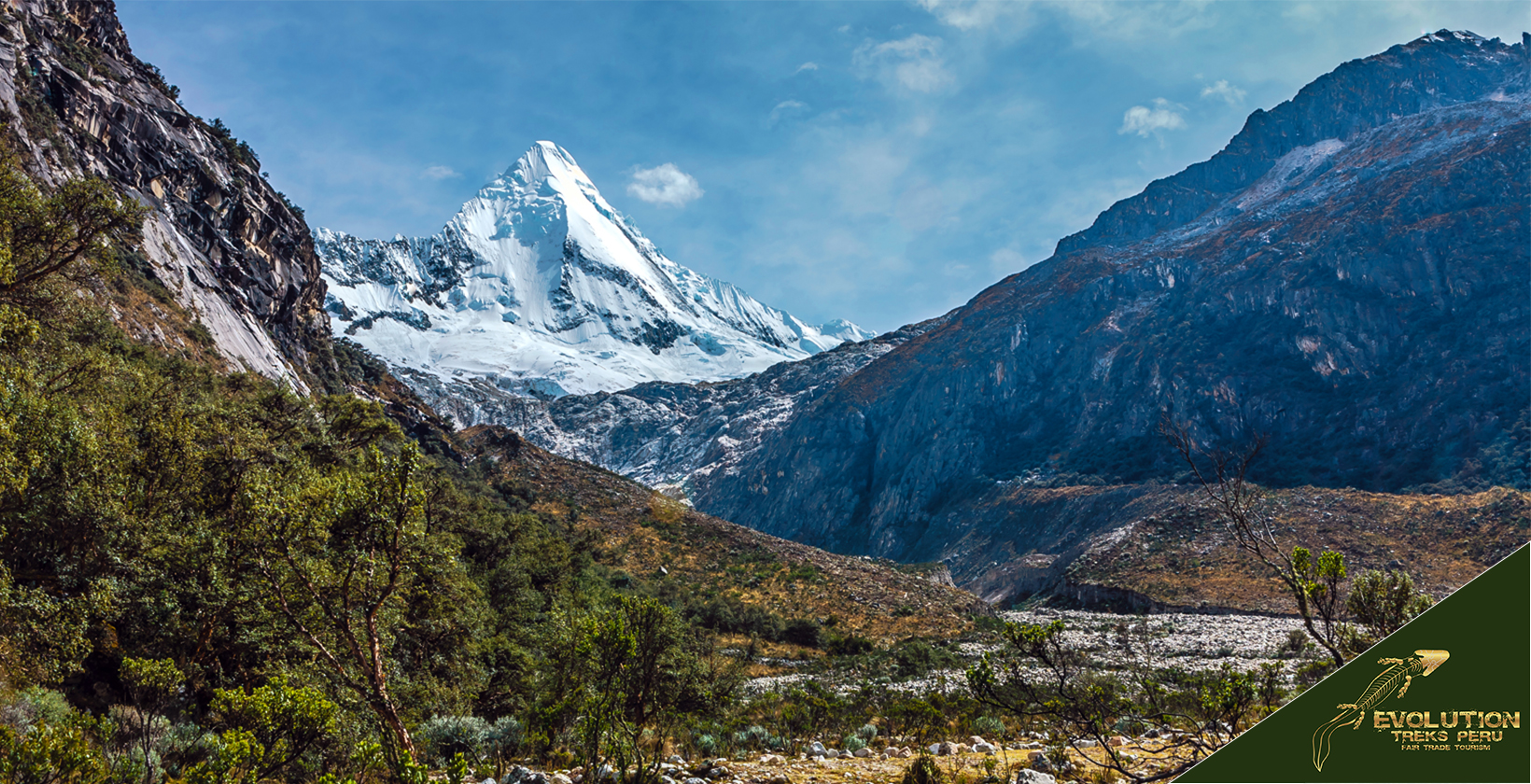
How is the Past of Alpamayo presented to the visitors?
Even in the past, the high mountain of Alpamayo was strongly praised for its astonishing pyramidal structure. Its reputation for having stunning views and challenging climbs did not change throughout the years. However, past climbers were buried and died somewhere on the Southwest face of the mountain. Yet, the danger of the mountains could not stop tourists from exploring them.
During the peak season, Alpamayo’s base camp can be crowded. Most of the time, parties must often wait for their turn to climb the mountain. Although half of most climbers successfully make it to the summit due to technical difficulty.
It will require two to three days of trekking before reaching the mountain’s base camp. The weather on the peak changes quickly, so it is necessary to climb quickly if possible. All the routes going to the summit are steep and require advanced-intermediate snow and ice climbing skills.
How is the Preservation of Alpamayo?
There is not much information regarding the preservation of Alpamayo. Although, Peru has a National Institute for Glacier and Mountain Ecosystem Research. It is a mountain research institute linked to the Ministry of the Environment of Peru. The main purpose of the research is to promote and expand scientific and technological research in the areas of glaciers and mountain ecosystems.
It is for the benefit of the population, to adopt adaptation and mitigation measures in the context of risks caused by climate change. Most hiking tours in Alpamayo observes and requires responsible travel practices among hikers and visitors. Each tour ensures the preservation of the fragile ecosystem in the area and the tradition of local communities. There are specific spots for toilet tents, in most camping areas, so the water resource won’t be polluted. All climbers regardless of the route must buy a parking permit to the Huascaran National Park.
Is Alpamayo in UNESCO World Heritage Sites?
No, Alpamayo mountain itself is not part of UNESCO World Heritage. According to UNESCO, to be a part of the World Heritage Site, the specific site should have a large value to society and to the generation.
Is Alpamayo under danger?
Yes, Alpamayo is in danger. The world today has become exposed to climate change, which allows glaciers to melt rapidly. If melting will continue and avalanche keeps happening, tourists will be put in danger, and Alpamayo has a chance of closing until everything will be controlled.
Is Alpamayo collapsed?
Yes, Alpamayo has already collapsed and has a chance of another collapsing. In the year 2003, 8 people were killed due to an avalanche that collapsed on top of them. The weather has a great impact on the mountain. Glaciers will suddenly collapse if there are changes in weather conditions. That’s why it is important that tourists must decide on the best month to visit and try to conquer the Alpamayo.
Are trainings required when climbing the Alpamayo?
Yes, training is required when climbing the Alpamayo. Alpamayo mountain is not the same as other mountains that can be climbed even without prior experience. It is one of the most technically challenging mountains to climb. The mountain is covered with snow, which makes it more challenging for its hikers. Beginners are not welcome to climb the 5,947 m elevation and steep tracks for their own safety. Even trained hikers will find Alpamayo difficult and challenging.
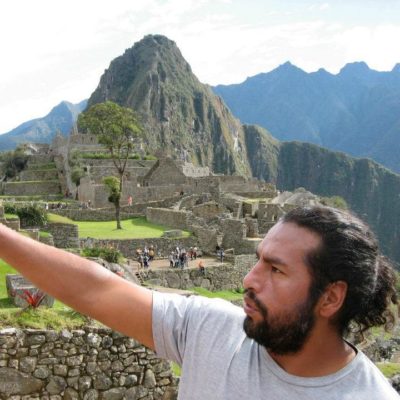
Miguel is a professional tour guide from Cusco, Peru, with almost 20 years of experience leading tours and a deep knowledge of Peru’s cultural and ecological diversity. He is also an advocate of ecotourism and cultural sensitivity and has lectured on these topics in the US and Europe. He co-founded Evolution Treks Peru, a worker-owned travel company based in Cusco.
